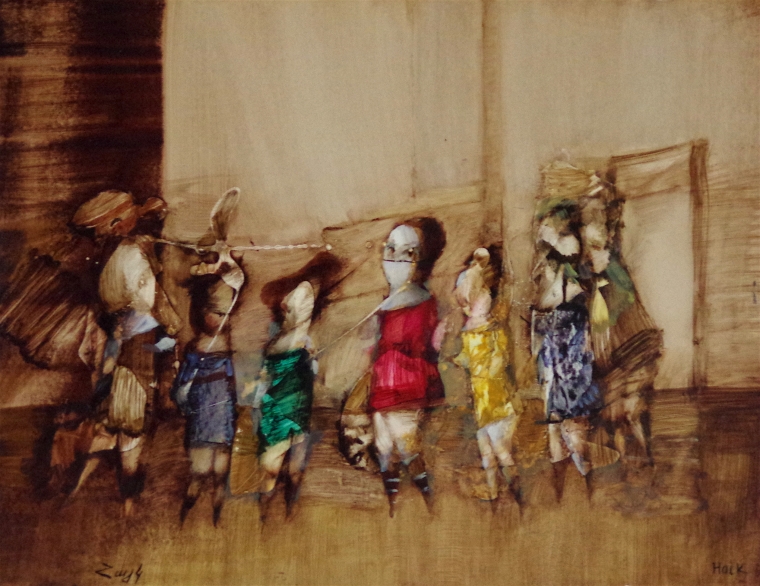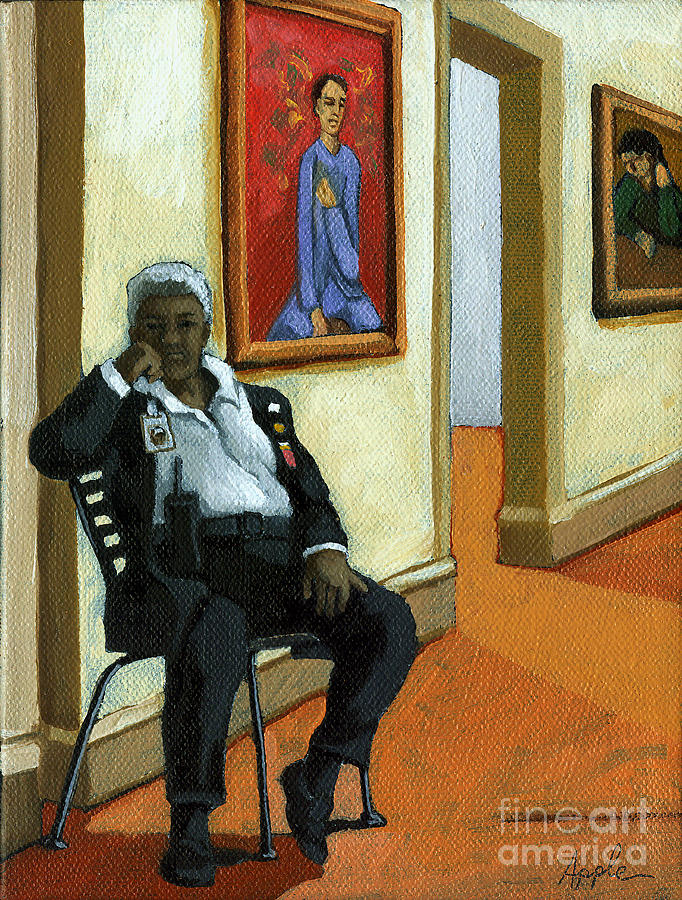Grasping the Art of Figurative Oil Painting: Necessary Tips and Techniques for Aspiring Artists
Metaphorical oil paint stands for a complex intersection of method and interpretation, requiring a thorough understanding of human makeup, make-up, and shade theory. An expedition of shade consistency and texture techniques can significantly boost the aesthetic influence of their work.

Recognizing Human Makeup
Comprehending human anatomy is essential for any type of musician aiming to understand figurative oil paint. An extensive grasp of the human type makes it possible for musicians to produce realistic representations that reverberate with viewers. Expertise of anatomical frameworks, such as muscular tissues, joints, and bones, provides important insight right into how the body actions and presents.
Musicians need to acquaint themselves with the percentages of the human number, including the partnership between different body components and just how these proportions differ throughout sexes and ages. This awareness enables precise scaling and perspective in their job. In addition, understanding the underlying musculature boosts the capability to show activity and stress in a figure, causing a more dynamic and engaging composition.
Examining composition likewise aids in recognizing refined subtleties in position and expression, which are essential for sharing feeling and story within a painting. Resources such as physiological books, life drawing sessions, and online tutorials can be very useful devices for artists looking for to strengthen their anatomical understanding. Inevitably, understanding human composition not only improves technical skill but additionally enriches a musician's creative vision, enabling them to bring their figurative oil paints to life with authenticity and deepness.
Value of Structure

Secret concepts of structure consist of equilibrium, unity, and prime focus. Attaining balance ensures that no single element overwhelms the others, while unity develops a sense of consistency throughout the item. Focal points draw interest to significant aspects of the artwork, allowing viewers to engage with the narrative or motif extra deeply.
In addition, making use of leading lines and the guideline of thirds can dramatically enhance make-up. Leading lines naturally lead the viewer's gaze with the paint, while the rule of thirds provides a framework for putting crucial components in an aesthetically appealing fashion. By grasping composition, aiming artists can raise their figurative oil paintings, transforming them into compelling visual tales that resonate with their audience.
Learning Color Theory
Color theory functions as a fundamental element of metaphorical oil paint that enhances the concepts of composition. Comprehending the shade wheel, that includes primary, second, and tertiary colors, is important for producing unified palettes and efficient visual stories.
Secret concepts such as saturation, shade, and value play an important role in figuring out the state of mind and influence of a paint. Musicians should discover great and cozy colors to stimulate specific emotions; cozy shades often communicate power and interest, while awesome shades can impart calmness and peace.
The partnership between corresponding shades-- those contrary each various other on the shade wheel-- can produce striking contrasts and vibrant compositions. When compared, these colors enhance each other's vibrancy, drawing the viewer's eye and adding depth to the art work.
Additionally, understanding similar shades permits artists to attain a sense of unity and coherence. By picking shades that are nearby on the wheel, one can keep a balanced environment throughout the piece.
Ultimately, grasping color theory furnishes aspiring artists with the tools essential to manipulate color intentionally, boosting their capacity to convey emotion and narrative via figurative oil paint. figurative oil painting.
Methods for Structure
A variety of strategies can successfully produce structure in metaphorical oil painting, including deepness and measurement to the artwork. One fundamental strategy is the usage of impasto, where thick layers of paint are applied to the canvas, allowing for a three-dimensional quality. This technique boosts light interaction, producing vibrant visual interest.
An additional method is scumbling, which includes applying a slim layer of lighter paint over a dried out darker layer. This method enables the underlying color to reveal with, resulting in a soft, textured result that can stimulate a feeling of ambience or age. Dry cleaning is also vital; making use of a dry brush with minimal paint, musicians can produce great lines and delicate structures, excellent for catching the nuances of skin or textile.
In addition, palette knives can be employed to scrape or apply paint, producing special patterns and appearances. Explore various devices and products, such as sponges or rags, can even more improve the textural top quality of a painting. Ultimately, mastering these methods calls for technique and experimentation, permitting musicians to uncover the varied tactile high qualities that can elevate their figurative jobs.
Creating Your One-of-a-kind Design
An artist's special design is usually the end result of personal experiences, affects, and methods developed over time. Developing this originality in metaphorical oil paint requires a conscious initiative to explore both your psyche and the more comprehensive creative landscape. Begin by reviewing the motifs and subjects that reverberate with you emotionally; your interest this article will infuse authenticity into your job.
Research study various designs and movements, but as opposed to mimicing, remove elements that talk with you - figurative oil painting. Trying out various strategies, color schemes, and make-ups, allowing on your own the freedom to play without the stress of perfection. Keep a sketchbook or journal to document your ideas, concepts, and imaginative progress; this will act as a beneficial resource for identifying persisting preferences and themes
Seek positive responses from mentors or peers, as they can supply understandings that light up aspects of your work you may forget. Attend events and workshops, immersing on your own in the art community to additional fine-tune your point of view. Be patient with on your own; the journey of establishing an unique design is recurring, evolving with every canvas and each brushstroke you experience. Welcome the process as high as the result, and your unique voice will emerge.

Conclusion
Understanding figurative oil paint necessitates an extensive grasp of human composition, structure, and color concept. Embracing these foundational concepts will substantially benefit aspiring artists on their innovative trip.
Metaphorical oil painting represents an intricate intersection of technique and analysis, requiring a complete comprehension of human makeup, structure, and color concept. An expedition of shade consistency and structure techniques can dramatically enhance the visual effect of their job. By mastering make-up, aiming musicians can elevate their metaphorical oil paintings, transforming them right into engaging visual stories that resonate with their audience.
Experiment with different techniques, shade palettes, and compositions, permitting on your own the liberty to play without the stress of perfection.Understanding metaphorical oil painting demands a detailed grasp his response of human anatomy, i thought about this make-up, and color theory.